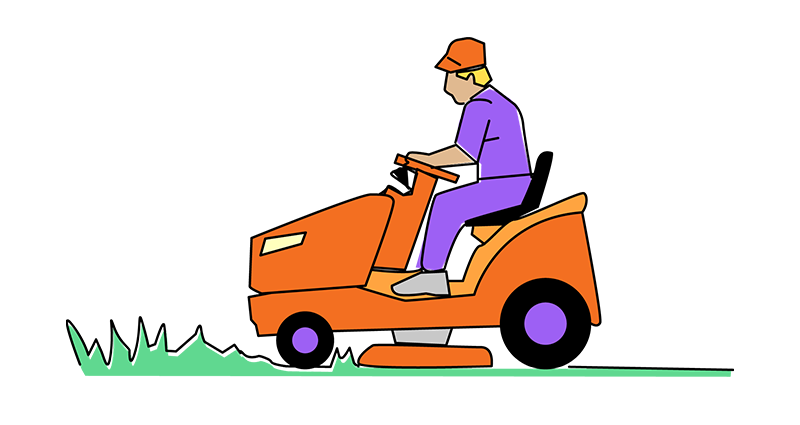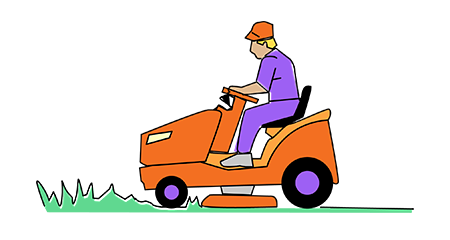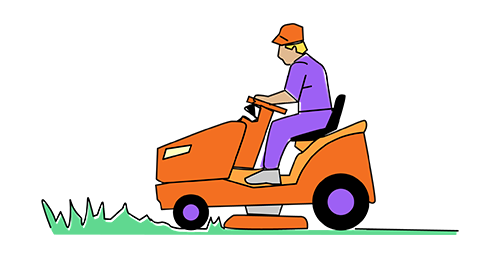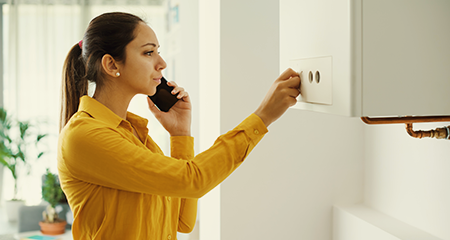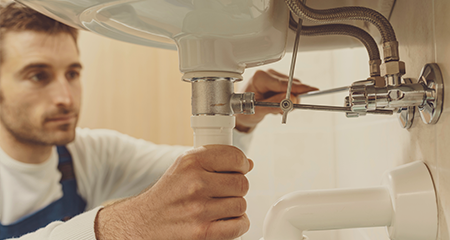Use an energy-efficient lawn mower.
Like an old car can release excessive emissions into the air, the same is true of older mowers. Consider an EPA-friendly model if you’re upgrading your lawn mower and prefer a gas-powered one. These mowers emit fewer emissions and have carbon filters to catch extra hydrocarbons.
Electric mowers are easier on the planet and cheaper to use. Rechargeable electric mowers are increasing in popularity, and the technology has really improved over the years. If you want to go old school, a manual push mower consumes zero energy other than your own physical labour!
You don't have to use power tools every time.
You might use a hose or power washer to clean debris from your patio or walkways. Consider using a broom instead. Sometimes, it is just as effective and doesn’t waste water. Choosing to rake up leaves instead of using a gas-powered leaf blower will also reduce your carbon footprint when cleaning up around the yard.
Green planting tips
Consider your yard's soil.
The amount of water your lawn requires depends partly on your soil. For example, plants growing in sandier soil need more watering than those in clay-based soil. However, sandy soil yards should be watered in shorter bursts because the roots absorb water quickly.
What kind of soil is in your yard? Learning more about that can help you avoid water waste.
Use natural fertilizers.
Fertilizers can help your grass and gardens grow, but most chemical fertilizers harm the planet. When it rains, those chemicals go into storm drains and eventually into lakes and rivers. That causes all kinds of problems for the eco-systems.
Thankfully, you can still benefit from natural fertilizers without polluting our waterways. Organic fertilizers can help plants grow, stabilize your lawn, reduce weeds and ward off fungus. Most home and garden stores carry a selection of organic and all-natural fertilizers.
Consider an alternative to a conventional lawn.
While green lawns are attractive and common in Alberta, they aren’t the most environmentally friendly option. Kentucky bluegrass is the grass most used for lawns, and it needs a lot of water to thrive. Consider planting a native grass instead.
You can also consider installing a xeriscape! This type of landscaping greatly reduces or eliminates the need for extra watering. Native plants, mulch, stone pathways and rock beds are easy to maintain and have a minimal footprint.
Let grass clippings fly free!
Take that collection bag off the lawnmower and let those grass clippings fly free. Grass clippings are a natural fertilizer. As grass clippings decompose, their nutrients go back into the soil. Leaving the clippings to fertilize the lawn also reduces the carbon emissions it takes to transport them to a compost or landfill site.
Green watering tips
Conserve water when planting.
New plants require water, but there are ways you can reduce the water used. Plant smart! For example, plant native species that are used to the amount of rain your area typically receives. Then you won’t need extra watering to keep them alive. Plus, you can add composite to the soil to help retain moisture.
The time you water your lawn matters.
The best time to water your lawn is early morning or late evening. If you water it during the day, especially during the hot afternoon, most of that water will evaporate before the lawn can benefit from it.
An automatic sprinkler system can be programmed to water the lawn at sunrise and sunset, so you don’t have to wake up before dawn to water the lawn.
Green landscaping tips
Mix it up!
Mix up your plants, shrubs and trees. Planting one type of plant could attract pests that specifically love that one plant! A healthy variety of plants also helps convert carbon dioxide to oxygen. More plants and less lawn also mean less space to mow and water, reducing your environmental impact.
Plant trees.
There are so many benefits to having trees on your property! They look beautiful, absorb carbon monoxide, provide shade and protect your home from wind. Mature trees can also improve your home’s resale value!
If you’re unsure which tree species will be best for your property, connect with a local nursery! These experts can help you find trees for any space.
Install motion sensors.
If you are concerned about home security at night or want to improve safety when moving around your property after dark, install lighting controlled by motion sensors. These lights will turn on if someone or something moves by it. This simple change can reduce outdoor energy expenses by nearly 30% compared to leaving a light on all night.
Use solar lights for landscape lighting.
Consider solar-powered lights if you want to set the mood with landscaping lighting. They charge all day from the sun and use that solar energy to provide clean light at night, reducing the need for fossil-fuel-generated electricity. Solar-powered lights can light up a garden, highlight an accent piece in the yard, and create ambient lighting around your outdoor living spaces.
Avoid pressure-treated lumber.
Avoid using pressure-treated wood if you’re building a new deck, fence, or shed. Okay, we know it is usually readily available and less expensive, but it’s also bad for the air we breathe! The chemicals used to treat the wood are emitted into the air as the wood ages. Untreated wood options might cost more, but the health and environmental benefits are worth the investment.
A green lifestyle doesn't end at your property. You can do many things outside the home to protect the environment for you and the next generation.
























